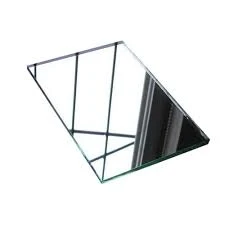

The Rise of Patterned Glass Manufacturers Transforming Spaces with Elegance and Functionality
In the contemporary design landscape, patterned glass has emerged as a significant element, capturing the attention of architects, interior designers, and homeowners alike. As a result, the demand for patterned glass manufacturers has seen a notable increase. These manufacturers play a pivotal role in creating aesthetic value while providing functionality, leading to a profound transformation in various spaces, from residential homes to commercial establishments.
What is Patterned Glass?
Patterned glass, also known as textured or embossed glass, is glass that features a design or pattern pressed into the surface either during the manufacturing process or applied afterward. The patterns can be varied, ranging from subtle textures to bold designs. This type of glass not only serves as an artistic addition to space but also offers practical benefits, such as privacy, light diffusion, and UV protection. Common applications include shower doors, windows, partitions, and decorative panels.
The Manufacturing Process
The production of patterned glass involves advanced technologies and skilled craftsmanship. Manufacturers typically start with clear glass, which is then processed through methods such as rolling, pressing, or casting to create the desired patterns. Different techniques yield varied results, allowing for a wide range of textures and designs. For instance, glass can be rolled through patterned rollers to achieve a smooth, uniform texture or embossed using molds to create more intricate designs.
Once the glass is patterned, it undergoes treatments for added durability and functionality. For example, it might be tempered for strength, coated for improved energy efficiency, or treated to enhance its resistance to scratches and fingerprints. This attention to detail ensures that the final product is not just visually appealing but also long-lasting and practical.
Trends Influencing the Market

Several trends are shaping the patterned glass manufacturing industry. One of the most significant is the growing demand for sustainable building materials. Consumers are increasingly aware of environmental issues and prefer products that minimize their carbon footprint. Manufacturers are responding by adopting eco-friendly processes and utilizing recycled materials in their production.
Another important trend is the customization aspect. As design becomes more personalized, patterned glass manufacturers are increasingly offering bespoke solutions to meet the unique needs of their clients. This can include custom sizes, patterns, and finishes, allowing designers to create tailor-made solutions for a variety of applications.
Applications of Patterned Glass
The versatility of patterned glass means it can be used in a multitude of settings. In residential spaces, it enhances privacy in bathrooms while still allowing natural light to filter through. In commercial environments, it can be employed in office partitions or conference rooms to create an open yet separated feel, promoting collaboration without sacrificing confidentiality.
Moreover, patterned glass is a popular choice for decorative elements. It can be used in doors, cabinets, skylights, and even as artwork. The play of light through textured surfaces adds a dynamic quality to interiors, making spaces feel more vibrant and alive.
Conclusion
As the market for patterned glass grows, manufacturers continue to innovate, introducing new designs and techniques that push the boundaries of what is possible with this versatile material. The harmonious blend of aesthetic appeal and practical application makes patterned glass an invaluable asset in modern design. Whether used in residential homes or commercial spaces, it significantly elevates the overall ambiance while serving essential functions.
In summary, patterned glass manufacturers are not just producers; they are crucial players in the ongoing evolution of architecture and design. By focusing on quality, sustainability, and customization, they cater to the ever-evolving preferences of consumers and designers, ultimately contributing to the creation of beautiful, functional spaces that resonate with contemporary values and aesthetics.